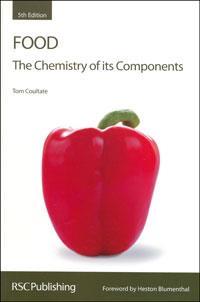The chemistry of food's components continues to delight
Food: the chemistry of its components
Tom Coultate
Cambridge, UK: RSC Publishing 2009 | 500pp | ?24.99 (SB)
ISBN 9780854041114
Reviewed by Mike Morgan

Food science (a phrase I use in the widest sense possible) has changed enormously in the last 20 years or so since the appearance of the first edition of this well-known textbook. Albeit belatedly, we have come to realise the importance of the relationship between food intake and health; there are even signs that many are discovering the links between agricultural production and the food we eat. We have moved from a narrow definition of food science, synonymous with food chemistry, to one appreciating that food chemists cannot think in isolation - and even need to think about nutrition occasionally. It now seems that everyone is interested in food, and therefore food chemistry. Reflecting this, the cover of the latest edition of Tom Coultate’s book is notable for the absence of chemical structures and the striking appearance of a red pepper. Further, there is a foreword from Heston Blumenthal!
The book is organised in 12 chapters covering the usual suspects with each chapter ending with some ’special topics’ (who could ignore ’sugar cane, sugar beet and tequila’?), further reading, and recent reviews. The style is even and eminently readable with sensible use of units and informative figures. The book makes an admirable attempt to summarise the latest research, something really difficult to do under any circumstances, but particularly so in fast-moving areas. I am not sure, for example, that it was wise to ascribe the rise of peanut allergy to the introduction of peanut-containing items to diets from an early age when the opposite might be the case!
In the age of the internet there may be some (including some of the target audience) who wonder about the need for textbooks. They are wrong; I shall certainly be recommending it to my students and reading it will be enormously beneficial.












No comments yet